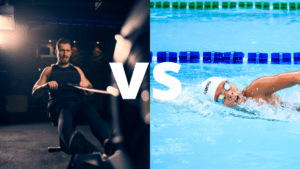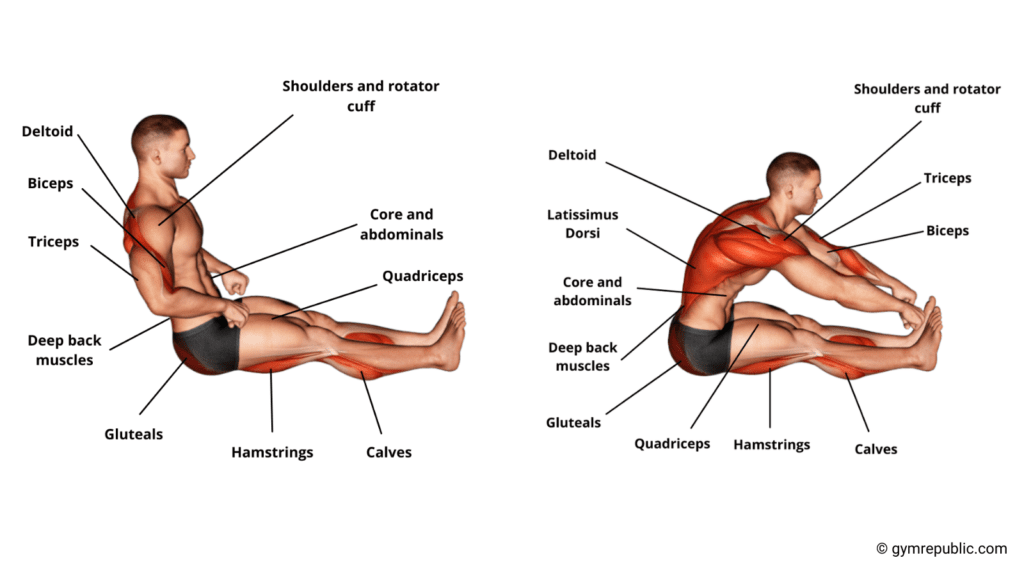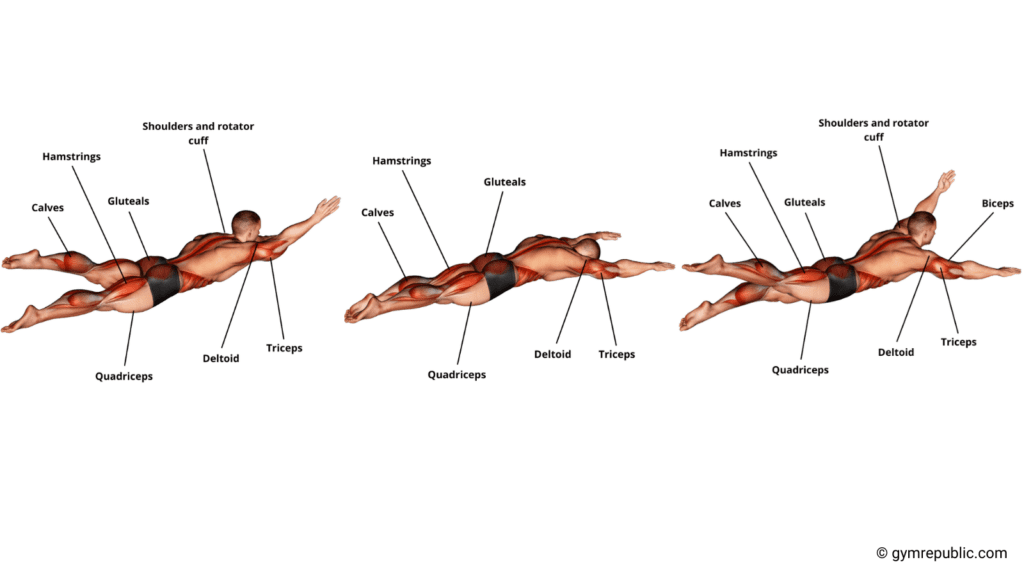
Rowing vs. swimming can be a tough decision to make if you are looking at which one is the better exercise for you. This may depend on your exercise background and if you have swum or rowed before. It may also depend on which is easier for you to access - a rowing machine or a swimming pool.
Both have great benefits and are low injury risk exercises that can burn a similar amount of calories. Rowing can be easier to pick up and learn the correct technique with than swimming.
Rowing can be an easier form of exercise to begin than swimming. Although both rowing and swimming require something for you to get started - for rowing, this is a rowing machine or a boat, and with swimming, you would need access to a pool. The techniques you may need to learn to swim as an exercise routine could require a swimming course. Whereas the techniques required for rowing can be easier to pick up.
If you know how to swim, and are competent to swim as an exercise program, but want to know which one will be easier to implement into your weekly exercise routine, then the best option would be the one you enjoy the most. Both rowing and swimming result in a full-body workout and will boost your cardio as well. It is possible to get a perfect workout in a short space of time, both with rowing and swimming.
With swimming, you will need to be comfortable in the water and, if you’ve never swum before, you may require some time to get used to being in the water, with your head under the water, as well as learning how to swim.
If you know how to swim, you may not be comfortable doing swimming as an exercise. There are many swimming courses and classes that you could join to help improve your swimming so that you can feel competent to make it a form of exercise. The classes can help you learn different strokes in swimming as well as help to improve your strokes to make them more efficient.
Rowing can be started quite quickly. However, to improve your technique and reduce the risk of injury, it is probably best to either ask for help in a gym environment or watch some videos on proper rowing techniques. As with any exercise, when it is performed correctly, you will get the most out of the exercise and reduce any chance of injury.
The risk of injury in rowing vs swimming is something to consider when taking up a new sport. An injury can impact your whole exercise schedule, and it is something to be mindful of, especially when starting a new exercise routine.
Swimming has one of the lowest risks of injury as it is a low-impact exercise. With the proper technique, Rowing also has a very low injury risk as it is also a low-impact exercise. Both swimming and rowing rely on good form when performing the activity.
The risk of injury would then be less for the exercise that you can perform better, with the best form, for rowing vs swimming.
Swimming and rowing both target almost all of your major muscle groups, as well as your diaphragm and heart. Rowing will use more of the major muscle groups than swimming, as swimming tends to use your arms, legs, and gluteal muscles.
(Source)
Calories burned are often the “standard” by which fat burning is measured. Rowing vs swimming with calorie burn is very similar, and different sources have one burning slightly more than the other. However, the difference between the two is minimal, and both are good low risk-injury, high-calorie burn types of exercise.
Based on 30 minutes of rowing
| Activity and intensity | 125 pound (56kg) person | 155 pound (70 kg) person | 185 pound (83 kg) person | 215 pound (97kg) person |
|---|---|---|---|---|
|
Rowing 50 W |
103 calories |
128 calories |
153 calories |
178 calories |
|
Rowing 100W |
207 calories |
256 calories |
372 calories |
356 calories |
|
Rowing 150 W |
251 calories |
311 calories |
372 calories |
432 calories |
Based on 30 minutes of swimming
| Activity and intensity | 125 pound (56kg) person |
155 pound (70 kg) person | 185 pound (83 kg) person | 215 pound (97kg) person |
|---|---|---|---|---|
|
Backstroke or crawl (50 yards/min) |
236 calories |
293 calories |
350 calories |
406 calories |
|
Breastroke |
295 calories |
366 calories |
437 calories |
508 calories |
|
Crawl (75 yards/min) |
325 calories |
403 calories |
481 calories |
559 calories |
If you are unsure how to work out your calorie output while using a rowing machine, then this calorie calculator can help you to work this out based on your body weight and the intensity of your workout.
Both rowing and swimming can put pressure on your lower back and increase lower back pain if performed incorrectly. It is so important for both rowing and swimming to pay attention to your technique of how you are doing the exercise.
If you can take the time to learn the correct technique for rowing or the correct technique for swimming, both can be good exercises for lower back pain and for strengthening your back and gluteal muscles.
If you experience back pain while rowing or swimming, it would be best to consult someone to check your form and find ways to improve it.
With any exercise, consistency is most important. Rowing vs. swimming in terms of what is best for you would be the exercise you enjoy the most and the exercise you have the next access to. If you enjoy a certain type of exercise and have easy access to it, you are more likely to commit to it and make it a part of your everyday life.


